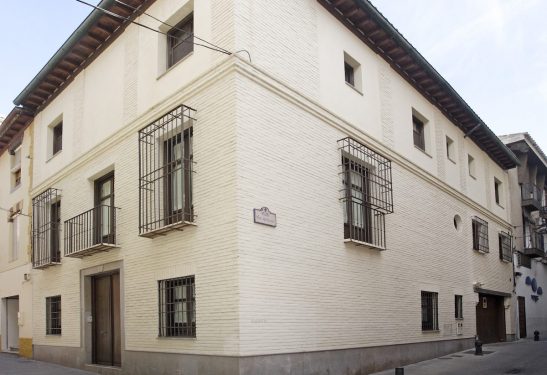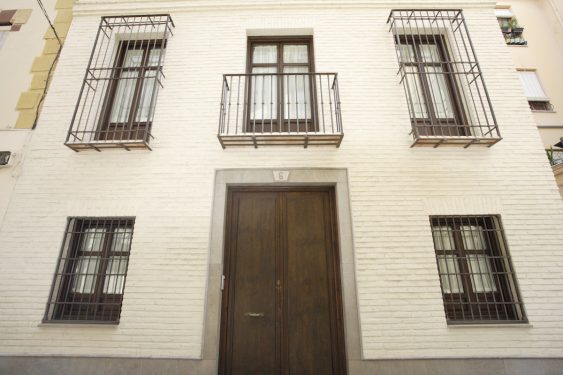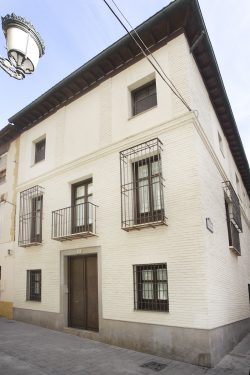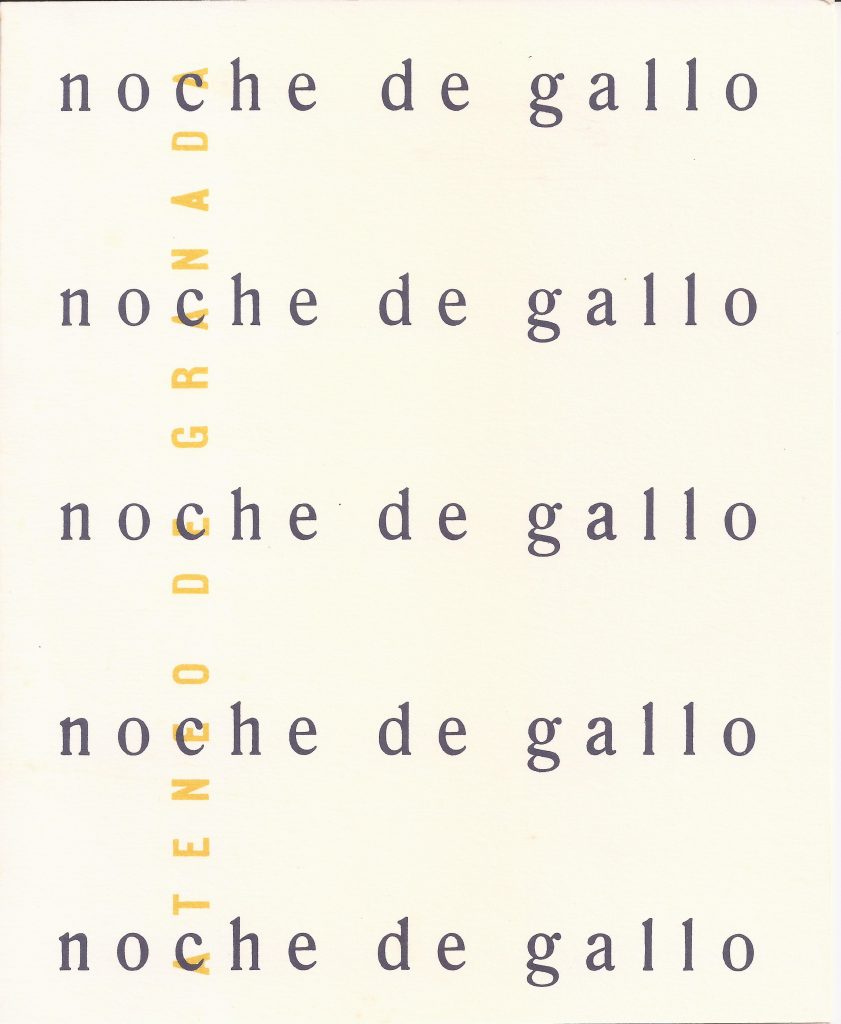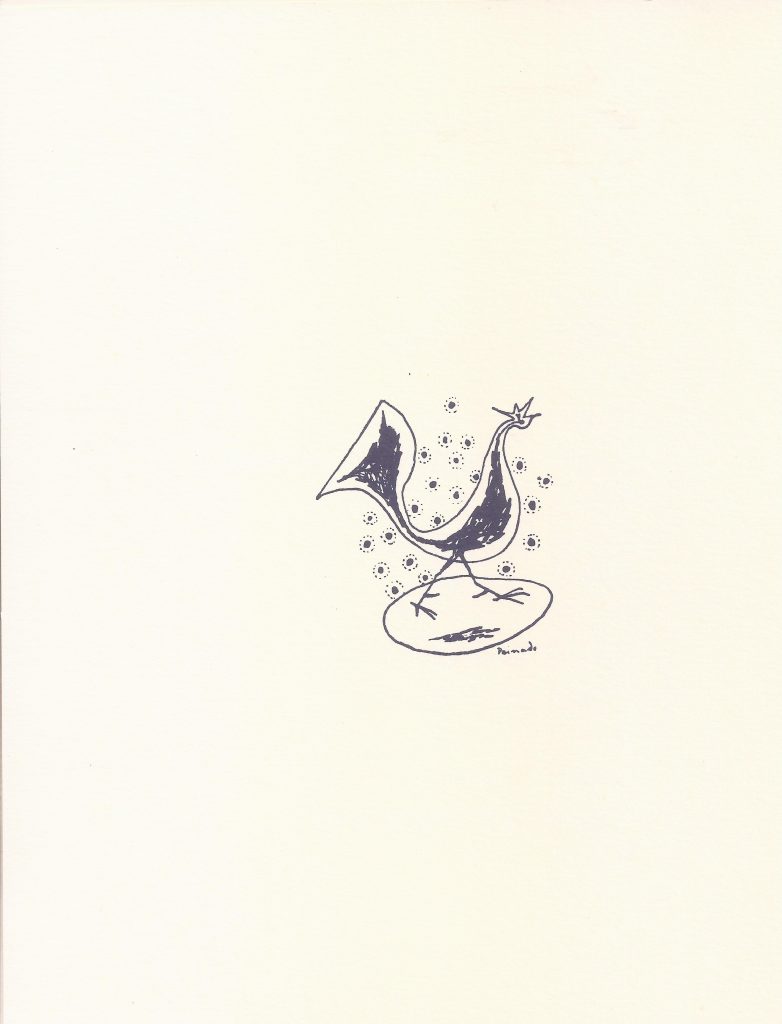New building where the first headquarters of the Granada Athenaeum was located between 1926 and 1928, the years when the gallo magazine was published.
The few participants who still kept alive the flame of El Rinconcillo (most of them had already left in the early twenties, even before, among them García Lorca himself) agreed to found in February 1926 the Ateneo de Granada (Granada Athenaeum), as opposed to the increasingly aging Centro Artístico. One of the animators of the exodus was Manuel de Falla, who already had disagreements with the Center in 1922 when he unsuccessfully proposed that the profits of the Song Contest be used for charitable purposes.
The Athenaeum represented the cultural outpost of Granada for several years and had multiple venues.
The first premises were rented, and were located in a 17th century building at 6 Varela Street, next to San Antonio Street. Shortly thereafter it moved to Plaza de Campillo, 1, next to the Alameda café, although it remained there also for a short time. A few months later, in the fall of 1926, it moved to the glazed gallery of the Cervantes theater, on the second floor. The last two have disappeared.
Its promoters were Fernando de los Ríos, who had been president in the first decade of the century of the Centro Artístico, Manuel de Falla, Francisco Soriano Lapresa, Constantino Ruiz Carnero and, from a distance, Federico García Lorca, who gave the inaugural lecture in Varela Street on The poetic image of Don Luis de Góngora.
The Ateneo represented the cultural outpost of Granada for several years. In its premises García Lorca also delivered his lecture on the Granada poet of Culteranism Pedro Soto de Rojas (Granada, 1585-1658), who lived in retirement in the Carmen de los Mascarones in the Albaycín. Lorca read there Soto’s Eclogue.
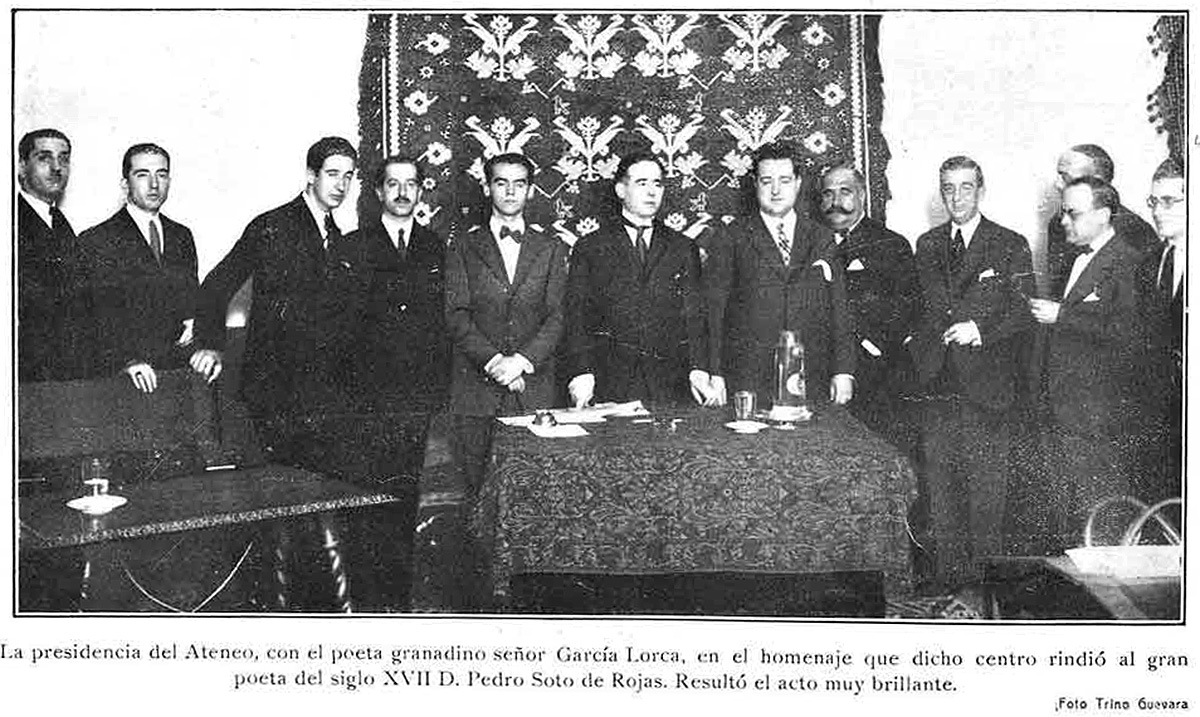
The following year, Federico knotted his ties with the Athenaeum with two other conferences, Imagination, inspiration and evasion of poetry, in which he shows his distancing from gongorism and his closeness to surrealism, and the Sketch of the new painting, within the so-called gallo’s night on the occasion of the appearance of gallo (rooster), the ephemeral publication encouraged from Madrid by the poet and directed by his brother.
The magazine even announced the publication of a Popular Songs of Granada by Manuel de Falla, which, like the rest of the collection, did not see the light of day.
The Athenaeum promoted the appointment as adoptive member of Manuel de Falla on the occasion of the two concerts of the Bética Chamber Orchestra held on February 8 and 9, 1927.
In the first, the Concerto for harpsichord was premiered in Granada, and Falla played Nights in the Gardens of Spain on the piano. In the second, the premiere was for the Master Peter’s Puppet Show. Both were held at the Olimpia Coliseum, on the Gran Vía. That night Federico García Lorca and the members of the Athenaeum made a pilgrimage to Antequeruela House, presented him with the parchment of honorary member, dedicated a floral offering and Lorca read a sonnet there that was dedicated to Falla.
The publication of two issues of the magazine gallo (rooster), plus its replica, some flyers baptized as Pavo (Turkey), was perhaps the most important activity linked to the Ateneo de Granada.
The publication, directed by Francisco García Lorca, was presented, after numerous delays and never fulfilled announcements of new collaborations, on March 8, 1928 at Venta Eritaña, an establishment located at the crossroads of the Sierra Nevada Highway with Güéjar Sierra. Lorca’s words about the project perfectly sum up its objective: “Magazine of Granada, for outside Granada, magazine that gathers the heartbeat of all parts to know better which is its own: living magazine, anti-localist, anti-provincial, of the world”.
The initial issue appeared in bookstores in the spring of 1928 and contained, among other contributions, a greeting from Melchor Fernández Almagro, a poem by Jorge Guillén, a literary contribution about San Sebastián by Salvador Dalí who also contributed drawings, as well as History of this gallo, a wonderful text by Lorca himself.
Between the first and the second gallo appeared Pavo, a singular anti-gallo replica invented by the roosterists themselves and signed by supposed reactionary creators. To celebrate the appearance of the four leaves, another dinner was held, but at Venta de la Lata, more in keeping with the project, and support was received from imaginary characters symbolizing the immobilist spirit, among them Isidoro Capdepón Fernández, a poet invented years earlier by the regulars of El Riconcillo. If gallo had his evening to celebrate his reception, the Brumario Evening was invented for Pavo in November 1928, in memory of Napoleon’s coup d’état.
The second and last issue included the fragment of a novel by Francisco García Lorca, Susana leaving the bathroom by Francisco Ayala and Buter Keaton Takes a Walk by Federico, as well as illustrations by Picasso and Dalí. It was the farewell. The magazine, which never exceeded 500 copies in circulation, disappeared, although it already had some materials for the third one.
Despite the hilarious and imaginative adventure that the appearance of the magazine gallo (rooster) meant for everyone, 1928 was not a good year for Lorca. Sentimental conflicts, the breakup with Dalí and the ambiguous criticism he had received for Gypsy Ballads or Mariana Pineda submerged the poet in a deep personal and artistic labyrinth in which the provincial fun of the magazine no longer fit, as a palliative. Shortly afterwards he left for New York.
The Athenaeum organized numerous activities. On June 27, 1927, after its foundation, it prepared the performance of Calderón’s auto sacramental The Great Theater of the World in the Plaza de los Aljibes in the Alhambra, in which Antonio Gallego Burín (artistic director), Hermenegildo Lanz (scenographer) and Ángel Barrios (orchestra conductor) took part. On December 11, it prepared a tribute to Domenico Scarlatti, in which Manuel de Falla performed 14 sonatas.
“Sing gallo (rooster), ‘regallo’ and ‘contragallo’. Sing for sure under your little hat of flames because one of your hens may very well be the goose that lays the golden eggs”.
(Story of this gallo (rooster))- Gallo. Facsimile edition of the two issues, plus Pavo magazine and the materials of the third. Study by Antonio Gallego Morell and contribution by Christopher Maurer. Comares. Granada, 1988.
- Nicolás Antonio Fernández. Federico García Lorca and the gallo magazine group. Diputación de Granada, 2012.
- Francisco García Lorca. Federico and his World. Alianza Tres. Madrid, 1990.
- Ian Gibson. Federico García Lorca. Biography. Grijalbo. Barcelona. 1987.
- José Mora Guarnido. Federico and his World. Losada. Buenos Aires, 1958.
- Lorca´s location
- Granada Athenaeum
- current location
- Varela, 6
- ADDRESS
- Varela, 6
- DETAILS OF THE VISIT
- What was once the headquarters of the Granada Athenaeum is now a private residential building. Only the exterior can be seen.
